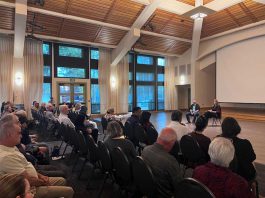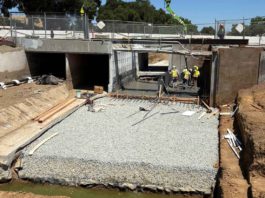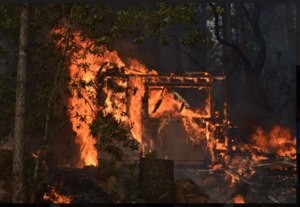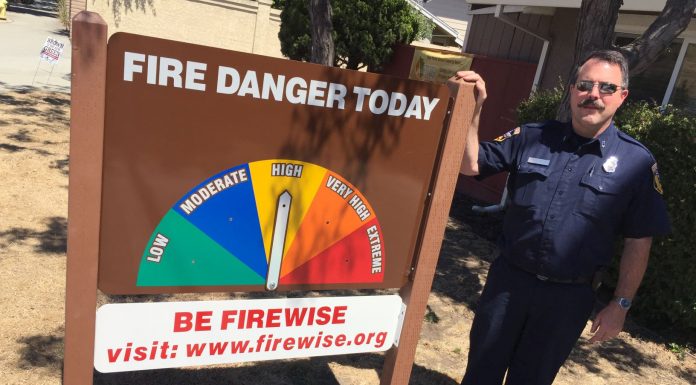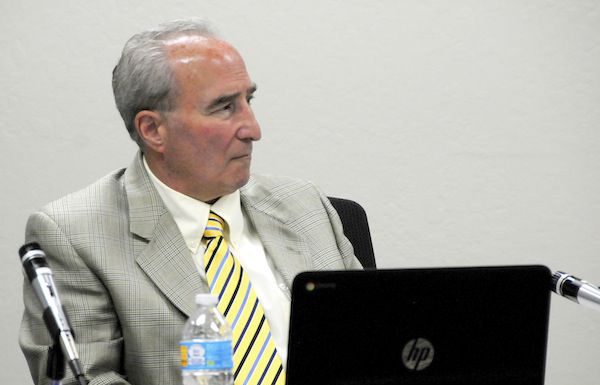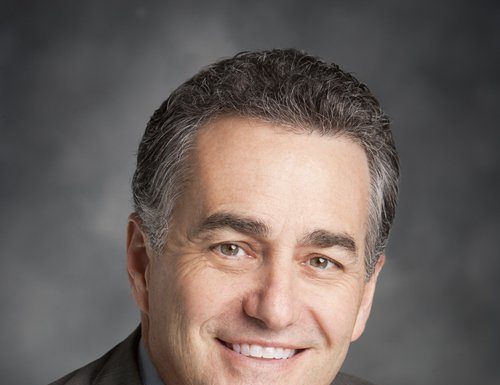Guest view: Show gratitude to veterans
Since the election last November, Americans are experiencing, with more frequency, encounters with people who have extremely different opinions from their own. However, when it comes to the men and women who valiantly serve our country, there is rarely disagreement that they deserve our support for the sacrifices they and their loved ones make to defend our country and the principles on which it was built. It is more important than ever that we stand steadfast as a nation to support military personnel during and after their service, and it was almost 100 years ago this November, in 1918, when the events of World War One provided the basis for what is now known as Veterans Day.Noting the 11th hour on the 11th day of the 11th month, an agreement to cease fire was declared between the Allied nations and Germany in Compiegne, France, bringing to an end the Great War. Originally known as Armistice Day in recognition of this interruption in the war, the observance was formally declared a federal holiday in the U.S. in 1938. Extending the holiday to honor all military men and women after World War Two and the Korean War, it was officially renamed Veterans Day in 1954.As we celebrate Veterans Day this year, I hope you will join me and express gratitude to our service women and men who dedicate themselves on our behalf to protect our great country. It is because of our confidence in them that we live without the fear of invasion or harm to our families as we go about our daily lives. To all of you who serve, you have my thanks and appreciation. I salute you and hope you stay safe.Sen. Bill Monning represents the 17th State Senate District, which includes all of San Luis Obispo and Santa Cruz counties, and portions of Monterey and Santa Clara counties.
Guest view: Disaster brings out the best in people
If there’s any silver lining to the North Bay fires, it’s the overwhelming outpouring of compassion and volunteerism in support of victims and first responders. In our darkest days, the very best in us came pouring out.As was made painfully clear, fire does not discriminate. We are all equal before the flames. Given the toxicity of national politics, it was refreshing and deeply moving to see how the North Bay responded to the catastrophe. It felt good to do something, anything, to help.Food and clothing drives popped up overnight. Restaurants offered free meals to first responders. People opened their homes to displaced strangers. Local kennels took in homeless animals free of charge. Banners thanking fire fighters went up on freeway overpasses.The question “How are you?” has become much more than a throwaway pleasantry, because, one way or another, we’ve all been affected by the fires, whether or not we lost our homes or loved ones. It could have been any one of us trapped in a burning home with no way out.The horror of the fire revealed our common humanity. America prides itself on its rugged individualism, but in times of crisis like this, it’s clear we are not strong because we stand alone; we are strongest when we depend on each other. The fire revealed that we are rugged dependents who support each other through the worst of times.Eventually, the smoke will clear and fire victims will go about the hard work of rebuilding their lives. There will be talk of a return to normalcy, and that’s good. But let’s hold on to the part of our common humanity awakened by the fires.Stett Holbrook is editor of the North Bay Bohemian, based in Santa Rosa.
Guest view: 500 years since Reformation
On Oct. 31, 1517, a fairly obscure professor and monk posted theses for an academic discussion. That action—and Martin Luther’s life of writing, teaching, preaching and standing up to the emperor and pope—sparked a Reformation that changed the world.Luther asks some of the most basic questions of human existence. He was on a quest for the right relationship between God and people, and how to show love for others in need. This speaks to the basic universal hunger we have to find our ground of being and to find an orientation that helps us to explain, “Why am I here?” and, “Where am I going?” and that then has an impact on how we actually live in this world.As we mark 500 years, I would like to personally invite you to any or all of three big community events this month hosted at our congregation, Advent Lutheran Church.• Faith of Our Neighbors: Christianity in the Lutheran Tradition presentation, sponsored by the Interfaith Community of South County, 4 p.m. Oct. 15• Reformation Hymn Festival, 5:30 p.m. Oct. 22• Catholic–Lutheran Common Prayer Service, 7 p.m. Oct. 30.Luther is an example of how one can stand up on the basis of one’s faith against institutions and individuals who are hurting people. When Michael King, Sr., visited Germany in 1934, he was so inspired by how Martin Luther changed society without a call to take up arms, that he changed his name, and his son’s name, to Martin Luther King. Ideas do matter.We will claim Luther and at the same time we will disagree with Luther. Along with my church denomination, I refute in the strongest terms Luther’s anti-Jewish writing late in his life. Luther himself was a clear example of one of his teachings: that each person is at one time both a saint and a sinner.He was simultaneously the most loved and most hated person in the Western world. No one in history left behind a more detailed written record—130 volumes—and no one seemed to feel the need to edit him. Nearly 1 billion Protestant Christians in the world today have been influenced by him.His influence extends far beyond the church. He unleashed new ways of thinking that profoundly shaped the secular world. For example, as a vocal advocate for the universal education of children, including girls, Luther paved the way for the now-ubiquitous public school system.He was the first to prove the power of the media to amplify the marketplace of ideas and to provide a check on government. He set in motion cultural changes that would lay the groundwork for democracies in the U.S. and Europe.I joyfully participate in the life of our South County community alongside people of many faiths. In the worship, teaching and life of today’s Lutheran church, we continue to share faith and service from Luther’s insight into the grace of God in Christ Jesus as attested in the scriptures. Five hundred years later, we may well be at another hinge of history. Our time, too, requires deep theological and ethical reflection to lead to courageous living.Anita R. Warner is the Pastor for Advent Lutheran Church of Morgan Hill, 16870 Murphy Ave. She wrote this guest view for the Morgan Hill Times. For more information about this month’s events and the church, visit advent-lutheran.org.
Guest view: Morgan Hill shows up for racial justice
After the November 2016 election, many of us in this community watched in horror as hate crimes against people of color and Jewish people began to rise. The reputable Southern Poverty Law Center, which tracked such events, rolled out a terrifying monthly toll that climbed and climbed.Rather than sit feeling helpless, a group of us felt moved to act as so many others in our community have already done. SURJ—Showing Up For Racial Justice—is a national group that organized after Barack Obama’s election drew intense, overt racism out of the woodwork, with the belief that it is up to white people to dismantle racism—specifically white supremacy.We started a local chapter, SURJ South County, to carry on SURJ National’s mission. We do not wish to be seen as “white saviors,” but rather to educate ourselves and others about the injustices against people of color, past and present, to bring awareness to the ways in which systems of oppression work against thriving communities and to hold ourselves accountable for change.We build upon the efforts of our local accountability partners, who have already been doing important, related work, like SIREN, CARAS, Indivisible South Valley, The Interfaith Council, The Learning and Loving Center, and more. We rally together with those targeted by systems of oppression. Not only do we hope to counter, with education and love, the agenda of hate that some feel emboldened to enact, we recognize that this country is founded on a history of white supremacy, violence and aggression against people of color, including the Native Americans whose lands were stolen and lives torn asunder.Since our group is not solely comprised of white folks, SURJ South County took liberties with SURJ National’s mission statement: we are a local group of individuals organizing people for racial justice. SURJ promotes all people acting as part of a multiracial society for social justice with passion and accountability.Our group also acknowledges the intersectionality of the ways in which systems of oppression affect marginalized groups (based on race, ethnicity, religion, gender, gender identity, sexual orientation, immigration status, ability/disability status, and more). SURJ provides a space to build relationships, skills and political analysis to act for change. So if you see us standing holding signs on the street corners in defense of DACA, the “Dreamer” act, or in solidarity with any person of color who has suffered as a result of this system, know that we are here to say, as Australian Aboriginal activist Lila Watson stated so eloquently, “If you have come here to help me, then you are wasting your time…But if you have come because your liberation is bound up with mine, then let us work together."SURJ South County will host a screening of the documentary “13th,” about how mass incarceration of people of color is a modern form of slavery, at the Morgan Hill Library, 660 W. Main Ave., with guest speakers after, from 6 to 9 p.m. Nov. 15.For more information, email Morgan Hill resident Jordan Rosenfeld at [email protected].
Guest view: Drought-proofing the water supply
Last winter’s drenching rain filled many state and local reservoirs, and dumped a healthy dose of snow on the Sierra Nevada. But the state’s fragile Delta infrastructure threatens the delivery of imported water throughout the state, which can become challenging for water agencies, especially in times of drought.The Santa Clara Valley Water District knows that to protect us from future droughts and dependency on imported water, we must continue to work toward securing reliable local water sources. That’s why the water district has been hard at work expanding its recycled and purified water program.Recycled water is wastewater cleaned through multiple levels of treatment. It can be purified to produce water that meets or exceeds all state drinking water quality standards. Through a series of advanced treatment processes, wastewater is stripped of contaminants, pharmaceuticals, viruses and bacteria to produce clean, safe and drinkable water.All of these advanced processes can be seen up close at the Silicon Valley Advanced Water Purification Center in San Jose. The largest facility of its kind in northern California, the purification center is a cornerstone of our recycled and purified water program. Since its doors opened in 2014, this state-of-the-art facility has been key in our efforts to increasing our drinking water supply with this drought-proof water source, independent of rainfall.There are two paths to do this: through indirect potable reuse or direct potable reuse. The first consists of replenishing our groundwater aquifers by allowing purified water to filter naturally through soil and rock layers, to be pumped later for drinking. The second is to send purified water directly to our drinking water system after it has been treated. Both options require further research and would require expansion of our pipeline system.Currently, recycled water is used for landscaping, agricultural and industrial purposes, such as irrigation or for cooling towers. This allows us to conserve drinking water.Since before the historic drought, the water district has made great strides expanding the recycled water pipeline network with several projects, such as the South County Recycled Water Pipeline Project. A partnership between the water district, cities of Gilroy and Morgan Hill and the South County Regional Wastewater Authority, this effort will add about 14,500 linear feet of pipeline in South County. When completed, it will increase the availability of recycled water in the area by roughly 50 percent, from 2,000 acre-feet per year to up to 3,000. (An acre-foot is about the same amount of water two families of five use in a year). The U.S. Bureau of Reclamation recently awarded $5.7 million in federal funding for the project, equating to about 25 percent of the total project cost. The four agencies have been working on expanding recycled water delivery for over a decade, as laid out in the South County Recycled Water Master Plan, which was introduced in 2004 and updated in 2015.For more information on our progress in recycled and purified water, I invite you to a free tour of our purification center. Schedule your tour and find tasting events at purewater4u.org.SCVWD Director John Varela represents the South County district, which includes Morgan Hill, on the water district’s board of directors. He can be contacted at [email protected].
Fast friends for a lifetime
I’ve never had so much fun in my life before I moved to Gilroy, seven years ago. I used to live in San Jose—where neighbors were cordial but where we all stayed to ourselves. On the weekends my husband and I either entertained close friends at our home or visited these same friends at their homes across town. My life revolved around my job and family life (all good things) without any interaction with my community. I often felt like City government and issues were miles away from me and that I was just an onlooker in my community.
Guest view: Protect your deck for fire safety
This guest view is part of a periodic series on tips to prepare for wildfire season, which started May 1 in Santa Clara County.Will your home survive when the embers arrive? Wind driven embers ignite many of the homes destroyed by wildfire. Your home could be at risk! BE EMBER AWARE and make changes to reduce the threat to your home. Remove leaves and pine needles from your rain gutters, keep your firewood a safe distance from your home and clean out debris from under your deck. You can learn more at emberaware.comMost people believe that wildfires ignite homes through direct contact with flames, but it is rare to have a home ignite this way. Flaming brands and embers can travel a mile or more ahead of the active front of a wildfire. Up to 60 percent of wildland/urban interface home ignitions result from embers.Tip Number 4: Deck dangerDecks are one of the parts of your home that are vulnerable to embers during wildfire. This applies to decks comprised of wood boards as well as those made from plastic and wood-plastic composite deck boards.If your deck ignites, the flames can ignite your combustible siding, break the glass on an adjacent window or sliding glass door, or climb to the eave and burn into your attic. If you have a deck and live in a high fire hazard area, you should consider the following:• Keep the gaps between deck boards free of pine needles, leaves and other debris. This tip also applies to the intersection between your deck and your house. Embers can become lodged in the gaps and ignite the deck. Also, don’t allow fallen pine needles and other dead plant material to accumulate on the deck surface during fire season.• The area underneath the deck is particularly susceptible to ember attack. Don’t store firewood, gas cans, lawn mowers, cardboard or other combustible materials under the deck and keep this area free of weeds, pine needles and leaves. Consider enclosing the deck with solid skirting, such as siding that is properly vented, or with 1/8-inch wire mesh to limit ember penetration and reduce maintenance. Don’t enclose it with wooden lattice.• Rotted or otherwise poor condition wood is more easily ignited by embers than wood in good condition. Replace deteriorated wooden deck boards and posts with new ones.• Install metal flashing between the deck and the side of the house. Be sure the flashing is installed to allow proper drainage of water.• If wildfire is threatening, remove combustible materials from the deck, including newspapers and magazines, baskets, door mats, dried flower arrangements, and place them inside the house or garage. Propane tanks should be placed at a distance of 30 feet or more from the house.Decks can contribute to the wildfire threat to your home. Take steps now to reduce the deck danger.Fire Marshal Dwight Good serves the Morgan Hill Fire Department and South Santa Clara County Fire Protection District and the CalFire Santa Clara Unit. He has 24 years of fire service experience. He can be contacted at [email protected].
Guest view: School site needs better soil/air testing
On June 27, the Morgan Hill Unified School District Board voted yes to go forward with remediation on the Peet Road/Borello property, where the district plans to build a new elementary school. The vote was four in favor, three against. On June 28, an article was written in the MH Times that did not reflect some key concerns highlighted during the meeting that questioned the successful monitoring of the safe levels of the toxin dieldrin during the projected August remediation.I did an extensive research into the district’s Removal Action Plan (RAW), as I was concerned about several factors, namely: the placement of only three or four air monitoring units described; the environment unique to Morgan Hill, primarily our winds and gusts; the 24-hour turnaround for the actual results; and exceeding the fence line “stop work” number of .05 mg/m3.I spent a majority of my career working with designing/analyzing measurement and testing equipment. I saw a disconnect in the amount of air monitoring units proposed in the RAW, coupled with the lack of information about the accuracy of these units. These two factors alone are concerning. The RAW indicated prevailing winds in that region of Morgan Hill as 3 mph. This is incorrect; I have personally been monitoring winds and gusts in Morgan Hill on key meteorological sites for 60 days. The actual winds and gusts are in the area of 9 to 16 mph.I then called Thermo Fisher, the maker of the measuring unit. The technical expert indicated the accuracy is +/- 5 percent based on constant calibration (manual) of the temperature and humidity; this information was not indicated in the district’s RAW. The Thermo Fisher expert then indicated the diameter of the air chamber is only 1 inch wide by 3 inches long. This expert then asked the length and width of the area being measured. I replied, nine acres, and he suggested 91 units are needed to accomplish a 95 percent confidence level. I asked if we can reduce the number of units and he said you can halve the 91 units to 40 at a distance of about 5 feet apart, but the confidence/success level will be reduced. This information was not included in the RAW report.At the June 27 board meeting, I asked the consultant of the Peet Road project, with a Department Of Substances Control representative on the phone via teleconference, if he knew the accuracy of these measuring units and the answer was NO. I asked if he knew the diameter of the air chamber, and the answer again was NO.I expressed my concerns that the RAW is only recommending one-tenth of the air monitoring that the experts say we need to protect the surrounding community with a high degree of success. The consultant and DTSC were unable to answer my questions regarding the wind/gust factors relative to when dirt dries and becomes airborne given temperatures above 80 degrees.The district’s RAW raised many other questions that need answering including why the soil wasn’t retested in the area that encompasses the proposed grassy area that students will be playing on. This planned grassy/field area is almost 56 percent of the Borello property.Our children will be exposed to TOXINS on a daily basis unless DTSC initiates further testing to be absolutely sure of the level of toxicity/Dieldrin in this quadrant of the land. I have a duty of care as a Trustee, I voted not to proceed.Gino Borgioli is a Morgan Hill Unified School District Trustee. He was elected to the board of education in 2014. He can be reached at [email protected].
Guest view: Budget invests in South County
The County of Santa Clara provides the services that hold the fabric of our society together, but are often invisible to the majority of our 1.9 million residents. My colleagues and I on the Santa Clara County Board of Supervisors recently approved the fiscal year 2017-18 $6.5 billion budget. For South County, I’m pleased to announce that we are funding some key projects including a new Urgent Care Center, a new Animal Shelter, funding for services provided by the South County Youth Task Force and the Fire Safe Council, as well as expansion of the Santa Clara Valley Wine Trail.The County’s $6.5 billion budget provides residents with vital medical services, public health protection, behavioral health care, food safety, environmental protection, child and adult protective services, senior services, family reunification, assistance to those in need, homelessness prevention and treatment, transportation, park and recreation, libraries, emergency response to disasters, the criminal justice system and scores of other services. Many of these are expected by our residents and taken for granted. However, they require a lot of work from a committed workforce of 20,000 employees including social workers, doctors, nurses, park rangers, engineers, firefighters, accountants, librarians, deputy sheriffs and so many more.A new 12,000-square-foot Urgent Care Center will soon be built within recently-vacated space in the existing Gilroy Valley Health Center, located at 7475 Camino Arroyo in Gilroy. The center will offer walk-in style urgent care, including night and weekend hours, and will serve up to 20,000 patients annually. Construction will begin later this year with plans to open the doors in summer 2018. The project is estimated to cost $5 million and will be funded with existing 2012 Measure A revenue.As an animal lover, I’m especially excited to announce that a new County Animal Shelter is on the way. It will be located at the Sig Sanchez County Government Center at Highland Avenue in San Martin. The new shelter will be approximately 34,600 square feet. It will feature multiple kennel and cage animal holding spaces, as well as spaces for administration, veterinary medicine, adoption, food preparation, laundry and storage. It will be able to house up to 90 cats, 70 dogs and multiple livestock on a daily basis. This shelter will cost $26 million, and is anticipated to open in late 2020.Public safety has always been my top priority. I was able to secure $266,000 of funding for the South County Youth Task Force after state budget cuts eliminated their funding. In just four years, the task force has helped to reduce juvenile arrests by an amazing 46 percent by reducing delinquent behaviors and preventing recruitment of youth into gangs. The task force has successfully reduced gang violence overall in Gilroy, Morgan Hill and San Martin.The Loma fire of the summer of 2016 gave many of us a renewed appreciation for fire services. We know that prevention is key. The Santa Clara County Fire Safe Council is a nonprofit organization dedicated to protecting communities at risk from wildfire. It is funded by private donations as well as local government agencies. The county is funding a new fully equipped tool trailer to perform hazardous fuel reduction and evacuation route clearing.Since we helped launch the Santa Clara Valley Wine Trail in 2013, it has been enormously popular with residents and visitors alike. The Wineries of Santa Clara Valley recently asked for my help after they identified the need to expand the Wine Trail (with increased signage) to provide better access to the wineries located inside the 29-mile Wine Trail loop. These new signs are scheduled to be installed in time for California Wine Month in September as well as Fall Passport Weekend in October.These new projects and services are just a few of the many ways that Santa Clara County government is providing what I like to call “Real Life Help” to South County residents every day.Supervisor Mike Wasserman was elected to the Santa Clara County Board of Supervisors in November 2010, and re-elected in 2014. He represents District 1, which includes Gilroy, San Martin, Morgan Hill, Los Gatos, Monte Sereno and portions of San Jose.
Guest view: Enjoy Independence Day in Morgan Hill
Happy Fourth of July from Freedom Fest!Yes, it's that time of year again, time to celebrate the birthday of our great nation. And, what better way to do so than to attend the events provided, free of charge, to our community, by Morgan Hill Freedom Fest.Begin on Monday by attending the 29th annual Patriotic Sing, 6 p.m., at the Morgan Hill Amphitheater, 17000 Monterey Road. Here, local children will be singing the songs of America and honoring our Armed Forces. Sing along as our children continue a tradition of performing patriotic songs on the eve of the Fourth of July! Please bring a lawn chair. Donations to our deployed troops will be accepted. (Check out southbaybluestarmoms.org for a list of soldiers' requests.)For those of you who are fans of Angeline Madriaga, she will be singing at this event as well as at the Family Music Fest in downtown Morgan Hill. The Music Fest begins immediately after the Sing, and features food, music and fun for all.On Tuesday, July 4, our events begin early (register at 6:30 a.m.) with the 1 Mile Children's Run and the 5K Adult Walk/Run. Then, find time to sit, at 9:30 a.m., and watch the Car Cruise along the parade route. At 10 a.m., you'll feel a sense of pride as our Freedom Fest Parade winds its way through Morgan Hill. Bands, horse units, community service groups and churches are represented in the entries.But wait, there's more! Our Freedom Fest events conclude at the Morgan Hill Outdoor Sports Center, 16500 Condit Road, with music and fireworks at dark. All in all, there are so many ways to make memories of a Hometown Fourth of July in Morgan Hill. Please see mhfreedomfest.com for complete details.Thank you to our Freedom Fest sponsors, to our members who work so passionately to present our events, and to all of you who will attend our celebration. We hope you are left with a renewed sense of patriotism and a new appreciation for Morgan Hill, this place we call home.Karen Ann Crane is the organizer of the annual July 3 Patriotic Sing, which is part of the Freedom Fest Independence Day festivities in Morgan Hill.


